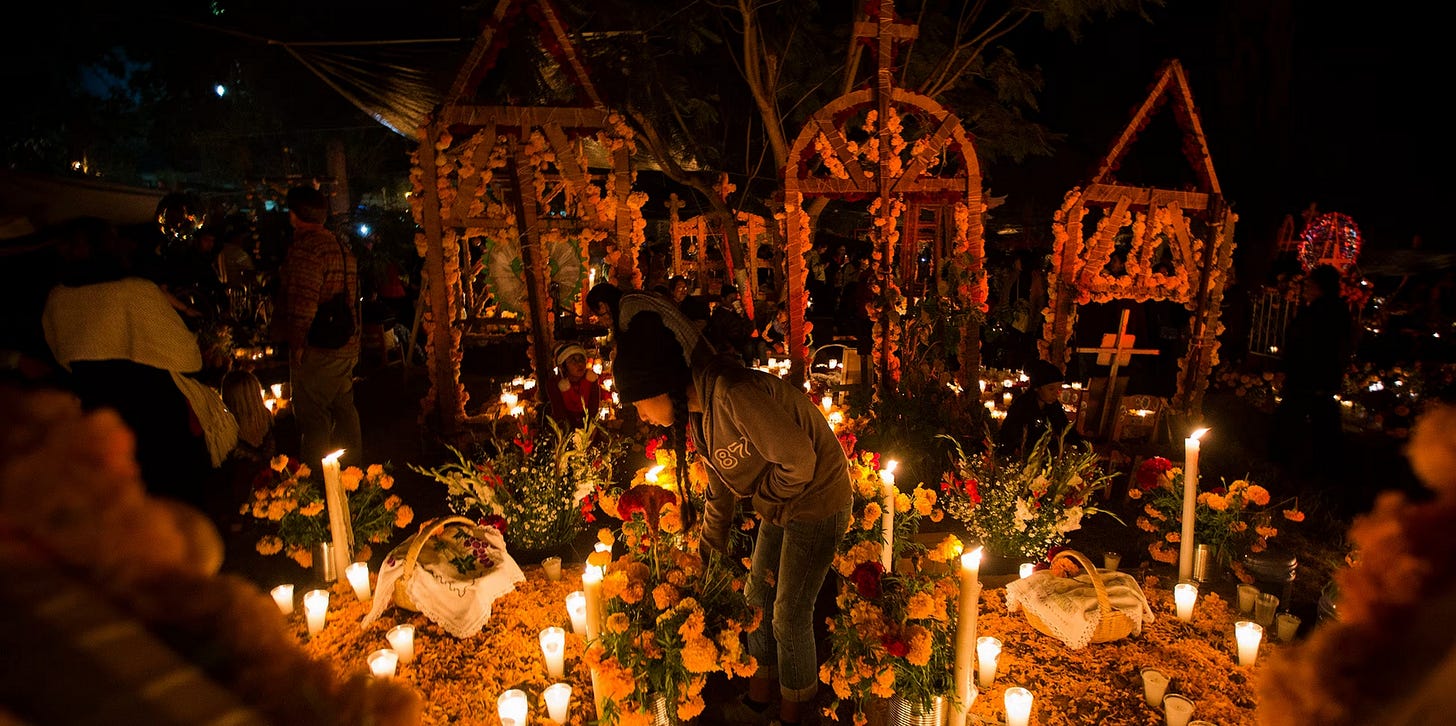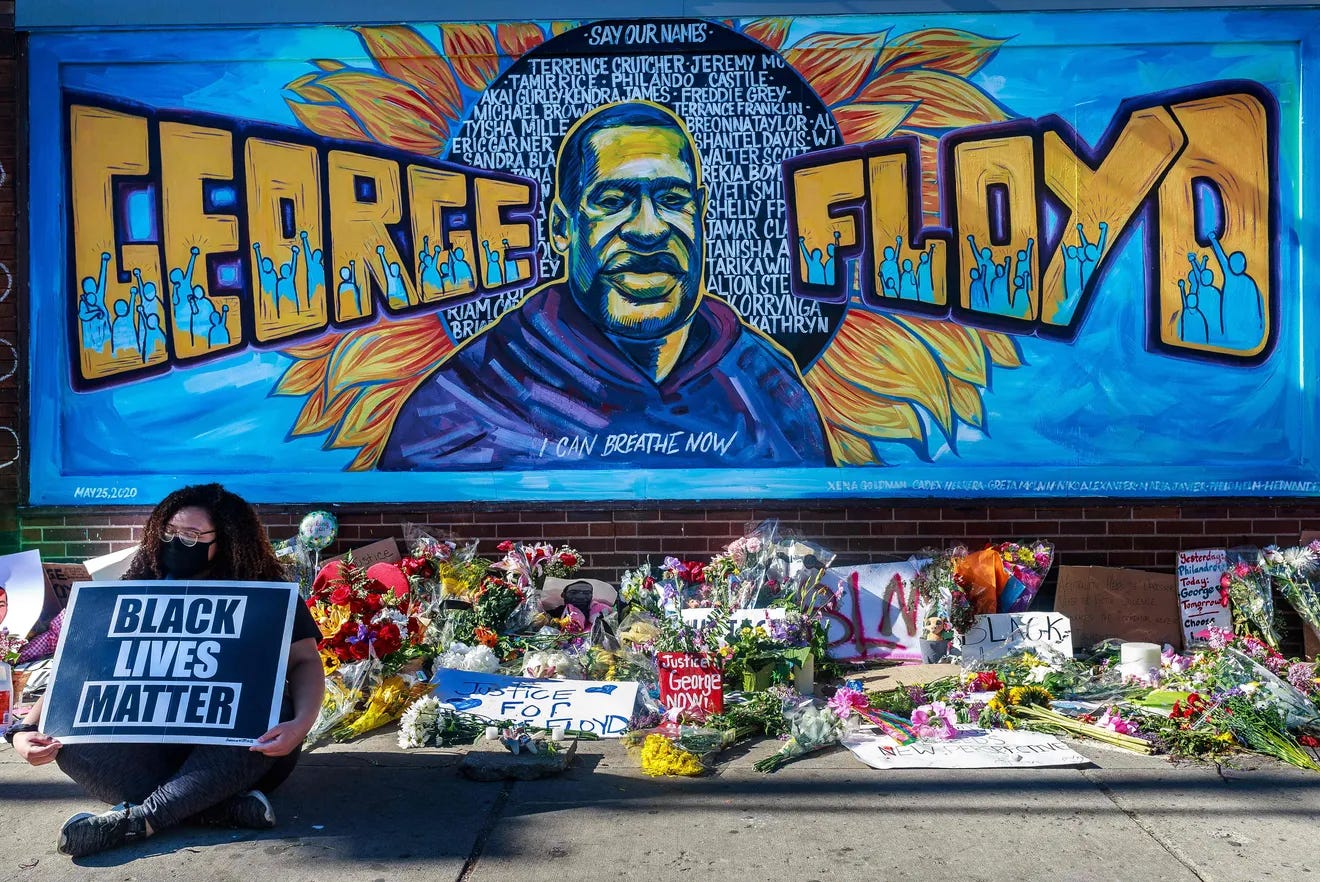Part 2: How A Celebration of Life Changed My Life
Altaring America: How a Celebration of Ancestor Remembrance Can Alter America
This is post is part two of a four series that will explain my journey to create and my vision for the Altar America Project, which centers cross-cultural ancestor remembrance practices as a vehicle for both preserving and creating culture in America, and as a means for transforming this nation into a more just, free, and equitable society.
You can read part one here.
Earlier this month, the Sixth Annual Altars Festival was held in Richmond, Virginia from November 1 to November 8. To learn more, please visit the website.
I was first exposed to ancestor remembrance practices about ten years ago, when a friend of mine in Washington, D.C. invited me to a Día de los Muertos, or Day of the Dead, party.
At the time, I simply thought that I was attending a party that was kind of like a Mexican Halloween. I honestly had no idea what to expect, and in hindsight, it has become clear to me that I could have never expected how this one party would change the trajectory of my life. From this party, a spark was ignited inside me and since then, it has never dimmed.
At this Day of the Dead party, I think I might have been the only non-Latino there. A Mexican-American girl I was dating invited me to the party, and through her I knew about a handful of people there. I knew some people at this party, but I did not know them with there faces painted and looking like skeletons. I did not know them when they had an altar erected that featured photos of departed loved ones. I did not know them as they consumed libations and remembered their ancestors.
I knew some of the people at this party, but I did not know what was going on at this party. This was a celebration that existed outside of my culture. This party felt foreign and I felt uncomfortable. This party was different. Day of the Dead was different. As probably the only non-Latino at the party, I was definitely different too. Yet despite my discomfort, I did not panic, I did not judge, and I did not ask to leave. Instead, I knew I needed to process what was going on, so I decided to be a wallflower and just observe and absorb the party with the hope that I could understand what was going on before the party ended.
As I stood along the wall and watched the party unfurl, a realization started to appear in my mind, and I understood that this party was not as foreign as I had originally thought.
When I looked at the altar that was the focal point of this party and the cause for celebration, it dawned on me that this altar resembled the altars that were being erected across the country to remember the Black Americans who were unjustly killed by the police or vigilantes, and had become the faces of the Black Lives Matter movement. The altar for Day of the Dead made me think about the altars created to remember Trayvon Martin, Michael Brown, and Eric Garner.
This party reminded me that my community also made altars, yet despite the newly-recognized similarities in Black and Latino altars, I also realized that our cultures had profoundly different practices related to altar creation.
In my community, we normally made altars in response to a tragedy. When someone dies unjustly or too soon, we make altars. Our altars are often a reaction. They exist as a means for coping with the trauma that follows a tragedy.
In my community, altars are normally somber and sad, and as a result, I believe I was less inclined to perceive altar creation as a part of my community.
And yes, there are plenty of Black Americans who may have their own individual practices, keep altars in their home, or may belong to a specific community that engages in ancestor remembrance, but proactive altar creation was not a practice that could be described as ubiquitous to the Black community. Creating altars as a reaction to and in response to a tragedy is far more ubiquitous in the Black community.
But should we define our response to tragedy as a cultural practice?
If we make altars as a response to a tragedy, then in order for altars to be a part of my community, I would also have to define tragedy as being a part of my community. If the reaction is part of my community, then the tragic prompt must also be.
Due to the normalized and centuries-long terror that has befallen the Black community in America, I can understand how the inevitability of tragedy could be perceived as part of our culture within America’s oppressive society, but this realization cannot breed acceptance and instead must empower transcendence. Our altars must exist to transcend the trauma, and America’s oppressive status quo.
I am unwilling to accept a tragic existence, and this is most likely why I did not consider altars to be a part of my culture despite knowing that we also created altars.
As I stood along the wall and observed my Latino friends, I saw no tragedy or crippling trauma. Instead, there altars brought joy and togetherness. I saw celebration and community.
At this Day of the Dead party, I recognized that altars were, in fact, a part of my culture, and I saw how they could be more than a response to tragedy. And in this moment, I saw a way to turn tragedy into triumph and transcendence.
Day of the Dead was different than anything I had previously experienced and it transcended trauma because it was proactive. Day of the Dead was a set date on the calendar. It occurred every year on November 1 and 2. No one here made their altar in response to anything. Tragedy was not the impetus for remembering your departed friends and family. Cultural and ancestor remembrance were the impetuses, and they had proactively dedicated a date for celebrating their preservation instead of reactively mourning their loss.
Once I understood the meaning of Day of the Dead, I began to feel less foreign at this party. I knew why I was there, I knew why all of us were here, and I started to have fun. When the party ended and we left, I knew that a proactive annual ancestor remembrance practice was something that I needed to do, but most importantly, I knew that this practice could benefit my community and many other American communities too.
When I left this party, I committed myself to figuring out how I could also engage in this practice, and most importantly, I knew that my engagement could not simply amount to participating in Day of the Dead each year.
From this first party, I could see that Day of the Dead was an expression of Mexican culture, and as a non-Mexican, I knew that I could not proactively express my culture by mimicking Mexican culture. Regardless of my intentions, it would be inadequate and insufficient for a Black man to celebrate Day of the Dead and erect a Mexican-style ofrenda to remember my Black ancestors such as John Hill II and Doc Mack. Even if no one accused me of cultural appropriation, I knew that I needed to create something from my own culture instead of borrow someone else’s.
Also, by not trying to mimic Day of the Dead, I knew that my practice would naturally become more inclusive to other communities. I knew that if I threw a similar party in the future, my guests would include Black, white, Latino, Asian, Indian, and Indigenous people, so I needed to make something that could include all of them. It would be insufficient to expect this diverse assortment of people to come together, celebrate their cultures, and remember their ancestors by mimicking Mexican culture.
By the end of the night, I knew that my new mission consisted of figuring out how to make a cross-cultural ancestor remembrance practice in the United States. I had no idea how or if I could do it, but I knew I had to try.
To achieve my goal, I knew that I would need to make a new cultural practice in America. My mission consisted of simultaneously preserving culture while also creating culture, and I had to do so without appropriating or destroying culture.
Again, I had no idea if I could do it, but I knew that I could alter American culture for the better by creating altars.
Roughly two years before I attended this party, I had contacted my Uncle Arthur and re-found my family history, and through Day of the Dead, I had found a means for proactively keeping their memory and history alive. These were the first two stages of my journey. Stage three consisted of trying to make a new cultural practice, and this stage has consumed the last ten years of my life.


